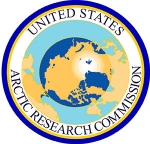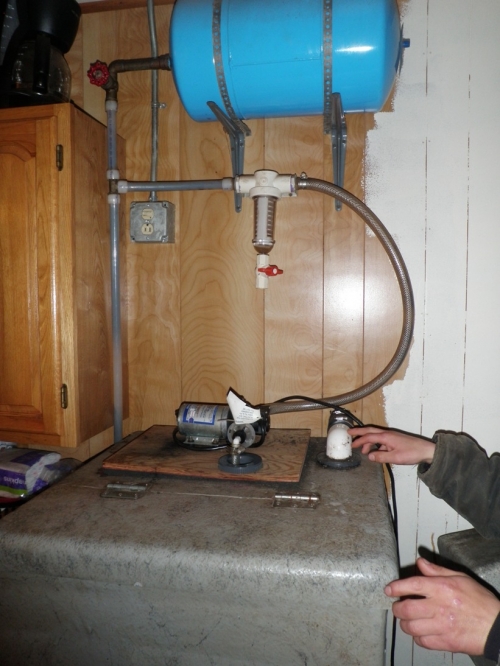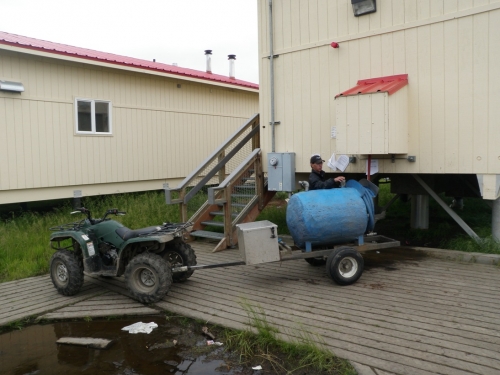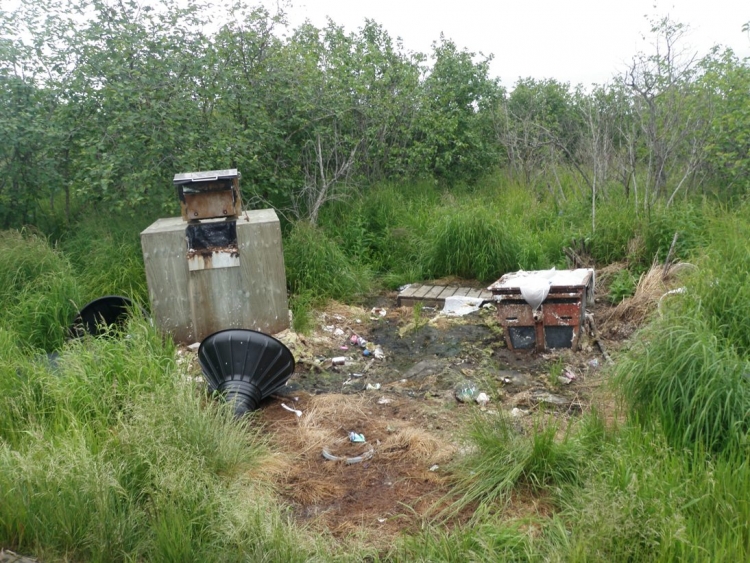By: Cheryl Rosa, DVM, PhD, Deputy Director/Alaska Director, U.S. Arctic Research Commission

The United States Arctic Research Commission is an independent U.S. federal agency tasked with advising Congress and the Office of the President on Arctic-related matters. The USARC develops national Arctic research policy, facilitates research cooperation, reviews federal Arctic research programs, and facilitates cooperation with Alaska and international partners. Its biennial "Goals Report" contains five research priorities for Arctic research. One of these five priorities is Arctic Human Health. The following article pertains to this priority. For more information, please see the USARC 2013-14 Goals Report.
Introduction: Water Security in Alaska: It's not just toilets we're talking about.
Water is needed for many purposes in daily life, including drinking, cooking, cleaning, and general hygiene. Much of the scientific discourse on water is focused on its quality but researchers have recently found that water quantity is also a factor critical to health in Alaska's rural villages.
Washing hands with clean water is something most people in the U.S. take for granted. Little thought is given to the importance of hand washing to remove bacteria, viruses, and other infectious particles that cause disease because it is an automatic act and the water is just there. However, for Alaska's rural residents, this is often not the case.
When people pay for water by the gallon, thought must be given to the quantity used. In many rural Alaskan communities, where jobs are scarce and household income is low, the cost of water is a significant economic issue that leads to household water rationing. With respect to hand washing, this type of water conservation often leads to the use of a communal washbasin, in which many people rinse their hands in the same water over the course of a day. These washbasins serve as transmission points for disease and, in some cases, have been measured to contain levels of microbial activity close to that of raw sewage by the time they are emptied. Recent Alaska-based research has shown that people who live in a place that has ample amounts of clean water for hand washing ("water secure") are likely to be healthier. Conversely, people who live in places that are not water secure have a significantly higher risk of certain "water-washed" diseases, such as pneumococcal disease (pneumonia, meningitis, etc.), respiratory syncytial virus (RSV) and a variety of skin diseases (including boils and infection with methicillin resistant S. aureus or MRSA).


Over 5,000 rural homes in Alaska are considered "unserved1" at this time. More than 2,000 of these homes are considered "non-serviceable2" via traditional approaches (e.g., pipe or haul systems) because of concerns related to capital costs. Water and wastewater systems all over the state of Alaska are failing or out of regulatory compliance.
The need is increasing and funding is decreasing.
Conservatively, it would cost over $700 million to meet existing rural Alaskan water and sanitation needs and an additional $200 million for a growing number of minor needs and improvements. Operations and maintenance (O&M) costs are rarely included when funding is appropriated for a new water or sewer system. Many rural communities cannot afford to foot these O&M bills and, as a result, aging systems are failing due to lack of maintenance. Concurrently, as heating oil and gas prices rise, functioning systems are becoming unaffordable to use and maintain. Finally, climate change is adding a new layer to an already complex problem, stressing existing systems. Melting permafrost causing increased total solids in ground water (which typical filtration membranes cannot handle) and alterations in the timing of snowpack melt (resulting in a need for altered water storage strategies) are examples of these changes.

The bottom line: many existing water and sanitation systems in Alaska are unsustainable over the long-term. There is insufficient federal or state funding to serve the 5,000-plus unserved homes in Alaska or to make other essential improvements. Health problems are expected to increase with the decrease in hand washing and body hygiene that will follow service declines. Innovation is one way to address these issues.
So what can be done?
Money is short and need is high. Innovative technologies may be a partial solution to this problem. In this case it may not be new inventions that are needed, instead, the new application of tried-and-true technologies so that they function well in Arctic and sub-Arctic settings holds promise. An example of this is application of gray water3 recycling technologies to in-home systems in rural Alaska. To flush a toilet with water previously used during showering or while washing clothes not only saves on the amount of delivered water used (and charged for) but also decreases the amount of wastewater that needs to be hauled away from the home. Low flow fixtures are another technology widely used in arid regions of the U.S., but not currently employed in Alaska. Investigation into their use and the behaviors surrounding their use is needed. Low flow fixtures must allow for adequate hand washing and the related improvement in health outcomes. The State of Alaska is currently promoting an effort to encourage this type of innovation. "The Alaska Water and Sewer Challenge" is a request for proposals (RFP) intended to spur worldwide research to develop innovative and cost-effective water and sewer systems for homes in remote Alaska villages. This endeavor focuses on decentralized water and wastewater treatment, recycling, and water minimization. The ultimate goals are a decrease in capital and user costs of in-home running water and sewer in rural Alaska homes and improvements in health outcomes. The RFP opened on 15 August and will close 15 November 2013 at 1:30 pm.
Innovation can also mean applying management systems in new ways. During the 1990s the State of Alaska funded a proposal called the Local Utilities Matching Program (LUMP). While achieving what may be the #1 worst acronym in the field, it also made significant advances in rural water and sewer management. In the case of LUMP, a $480,000 state appropriation was used to match residential user fees dollar-for-dollar. It was capped at $10,000 per village, per quarter. This program encouraged communities to collect user fees, which increased during the program; promoted trained operator retention, which is a huge problem in rural areas; reduced non-compliance enforcement costs by upping compliance to a startling 100%; and facilitated preventative maintenance programs, a critical need and a great topic for future discussion. So what happened? LUMP worked but the money ran out. The Alaska Rural Water and Sanitation Workgroup is currently evaluating parts of this pilot program for potential revitalization.
There are a variety of entities in Alaska working towards improving health outcomes in rural Alaska by providing and improving water services in villages. The U.S. Arctic Research Commission (USARC) is coordinating these groups so that this work is maximally efficient and ideas can be shared between federal, state, Alaska Native (AN), and academic groups. Called the Alaska Rural Water and Sanitation Workgroup, their work is directly applicable to USARC's priority goal of Arctic Human Health. Especially important is the interface between health, engineering, and AN groups knowledgeable about socio-behavioral practices in their communities. The integration of these ideas allows research on subjects such as hand washing to be more successfully incorporated into planning for new water systems. The workgroup hopes that greater human health improvements can be made more rapidly through this partnering effort.
More information about the USARC Report on the Goals and Objectives for Arctic Research 2013-2014 and other USARC activities can be found on the USARC website or contact Cheryl Rosa (crosa [at] arctic.gov).
End Notes
-
Unserved homes are homes without running water and wastewater service within the home. ↩︎
-
Non-serviceable homes are homes that do not have running water and wastewater service AND cannot be provided service even if available within the community for various reasons such as: the home is not structurally sound, does not have a thermostatically controlled heat source, is too far from the community center to feasibly serve, is too small or is not a year round occupied home. ↩︎
-
The relatively clean waste water from baths, sinks, washing machines, and other kitchen appliances. ↩︎
